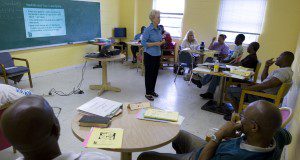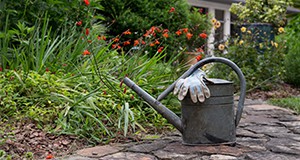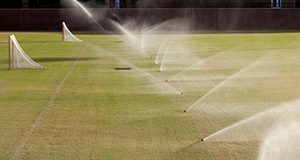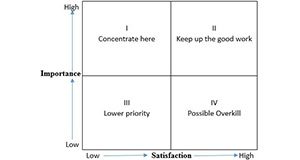Extension programs are most effective when informed by a deep understanding of the target audience. To guide programs in Florida’s managed landscapes, especially pertaining to water quality and conservation, faculty from the UF/IFAS Center for Landscape Conservation and Ecology conduct an annual statewide survey. The survey gathers data that includes common landscape elements, neighborhood characteristics, engagement in irrigation and fertilizer best practices, and learning preferences. This new 5-page publication of the UF/IFAS Department of Agricultural Education and Communication presents highlights from the 2018 statewide survey with recommendations for how to use the information. Written by Laura A. Warner, Esen Momol, Claire Lewis, Tom Wichman, Wendy Wilber, and A. J. Reisinger.
https://edis.ifas.ufl.edu/wc345
Tag: Laura A. Warner
Conducting the Needs Assessment #4: Audience Motivations, Barriers, and Objections
A successful needs assessment is contingent on participation from the right people, so understanding potential motivations, barriers, and objections specific to your participants is critical. This new 5-page publication, the fourth in the Conducting the Needs Assessment series, provides Extension educators and other service providers with an overview of motivations, barriers, and objections specific to participants in needs assessments. Written by Laura Warner and Matt Benge and published by the UF/IFAS Department of Agricultural Education and Communication.
https://edis.ifas.ufl.edu/wc342
Identifying and Meeting the Needs of Extension’s Target Audiences
This new 4-page article provides an overview of the concept of target audiences as relating to Extension education and briefly presents concepts of audience analysis and educational content selection. In contrast to the general population, a target audience is comprised of people who can take some explicit action to help solve an identified problem addressed by an Extension program. Sometimes they are also those most affected by that problem. An understanding of the concept of target audiences paired with intentional selection of appropriate educational activities and content can support an impactful Extension program. Written by Laura A. Warner, Glenn D. Israel, and John M. Diaz, this article is a publication of the UF/IFAS Department of Agricultural Education and Communication.
http://edis.ifas.ufl.edu/wc336
Program Evaluation Challenges for Early-Career Extension Professionals: What Can You Do to Reduce the Stress?
This article outlines meaningful strategies to overcome the program evaluation challenges that early-career Extension professionals face. The strategies outlined in this article are grounded in the experiences of Extension professionals in three states (Florida, North Carolina and Pennsylvania) and center on providing solutions to the challenges that newer Extension professionals felt were the most important to address, in order to provide a manageable framework for agents to use. This new five-page publication of the UF/IFAS Department of Agricultural Education and Communication was written by John Diaz and Laura Warner.
http://edis.ifas.ufl.edu/wc335
Using County Typology Informed by Population Size to Understand Key Audience Characteristics for Tailored Landscape Water Conservation Programs
A major priority for UF/IFAS is the promotion of science-based landscape management practices to conserve water resources. This 7-page publication outlines specific opportunities that exist for tailoring landscape water conservation programs to Floridians who live in more and less metropolitan areas. Written by Laura A. Sanagorski Warner and John M. Diaz and published by the UF/IFAS Department of Agricultural Education and Communication, September 2018.
http://edis.ifas.ufl.edu/wc314
Using Video Messages to Promote Residential Adoption of Fertilizer Best Practices
Residents may be inclined to over-fertilize their lawns due to pressure to maintain a neighborhood aesthetic. However, this activity can affect water quality. This 3-page document describes a study that was conducted in order to determine if video messages about fertilizer best management practices influenced perceptions of fertilizer use among residents. Written by Amanda D. Ali, Laura A. Sanagorski Warner, Peyton Beattie, Alexa J. Lamm, and Joy N. Rumble and published by the UF/IFAS Department of Agricultural Education and Communication, July 2018.
http://edis.ifas.ufl.edu/wc309
Using Perceived Landscape Benefits to Subgroup Extension Clients to Promote Urban Landscape Water Conservation
Because a large percentage of water used in urban areas can be applied through irrigation, home landscape management practices are an important factor of water conservation. The information in this 5-page document is the result of a cluster analysis used to identify meaningful subgroups among home irrigation users to encourage water conservation behaviors. Written by Amanda D. Ali, Laura A. Sanagorski Warner, and Anil Kumar Chaudhary and published by the UF/IFAS Department of Agricultural Education and Communication, May 2018.
http://edis.ifas.ufl.edu/wc291
Using Environmentally Themed Videos to Help Extension Promote Good Landscape Management Behaviors
Water quality and quantity are major issues in the state of Florida, and water resources can be affected by the way residents choose to fertilize and irrigate their lawns and landscapes. This 4-page document discusses the use of videos to promote good landscape management behaviors. Written by Laura A. Sanagorski Warner, Alexa J. Lamm, and Joy N. Rumble and published by the Department of Agricultural Education and Communication, May 2018.
http://edis.ifas.ufl.edu/wc302
How Do Floridians Perceive Their Role in Protecting Water Quality and Quantity Through Landscape Practices?
Florida is faced with challenges in protecting both water quality and quantity; the state’s incredible number of home landscapes can positively or negatively impact water depending on how landscapes are managed. In 2016, Florida residents with irrigated landscapes were surveyed in order to create more effective Extension programs regarding landscape best management practices. This 4-page document discusses the results of this survey. Written by Laura A. Sanagorski Warner, Alexa J. Lamm, and Anil Kumar Chaudhary and published by the UF/IFAS Department of Agricultural Education and Communication, January 2018.
http://edis.ifas.ufl.edu/wc293
Understanding Good Irrigation and Fertilization Behaviors Among Households Using Landscape Design Features
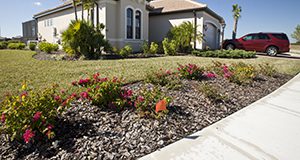
With increasing concerns over water resources in Florida, Extension can target households with irrigated landscapes to encourage practices that protect water quality and quantity. This document compares the water conservation education needs of different Florida household subgroups. Written by Anil Kumar Chaudhary and Laura A. Warner and published by the UF/IFAS Department of Agricultural Education and Communication, January 2018.
http://edis.ifas.ufl.edu/wc292
Enhancing the Success of Extension Programs with the Social Exchange Theory
Social Exchange Theory (SET) is based on the principle that human behavior is an exchange of rewards between people. This three-page fact sheet explains how it can be applied to Extension programming to promote clientele participation in programs and a commitment to changing their behaviors. Written by Amanda D. Ali and Laura A. Warner and published by the Department of Agricultural Education and Communication.
http://edis.ifas.ufl.edu/wc280
Water Conservation and Extension Participants: An Interesting Synergy
The home landscape is a place where there is a great opportunity for people to adopt irrigation practices and technologies that conserve water. However, a large portion of residents lack the required knowledge and skills to adopt some of those practices. This three-page fact sheet discusses using innovative evaluation approaches to demonstrate the impacts of statewide urban water conservation programs. Written by Laura A. Warner, Sebastian Galindo-Gonzalez, and Anil Kumar Chaudhary and published by the Department of Agricultural Education and Communication.
http://edis.ifas.ufl.edu/wc278
Estimating Benefits of Residential Outdoor Water Conservation: A Step-by-Step Guide
This 9-page fact sheet written by Tatiana Borisova, Laura A. Warner, Jennison Searcy, Anil Kumar Chaudhary, and Michael Dukes and published by the UF Department of Food and Resource Economics in February 2017 was developed to help Extension agents, water-conservation managers, and homeowners estimate the economic benefits of residential outdoor water conservation. It provides guidance for reporting benefits, including lowered utility bills for homeowners, reduced water-delivery costs for utilities, and increased water supply. This publication also offers an example of an impact statement.
http://edis.ifas.ufl.edu/fe1009
Consultation Forms for Walk-In Clientele and Landscape Site Visits
This eight-page fact sheet contains forms for horticulture Extension agents and staff to use during walk-in consultations and/or on-site consultations related to plant identification, problem diagnosis, and cultural advice. The forms are available as fillable PDFs. Written by Amanda D. Ali, Laura A. Warner, Sydney Park Brown, Susan Haddock, and Laurie Albrecht and published by the Department of Agricultural Education and Communication.
http://edis.ifas.ufl.edu/wc277
Encouraging Landscape Water-Conservation Behaviors #4: Florida Homeowners' Reactions to Messages that Encourage Landscape Water Conservation Practice Adoption
This is the fourth publication in a series focused on improving and encouraging water conservation among Florida residents who use irrigation in their home landscape. This four-page fact sheet examines the impact of differently framed messages on Florida residents’ attitudes toward good irrigation practices and their perceived ability to implement those practices. Written by Joy Rumble, Laura A. Warner, Courtney Owens, Alexa Lamm, and Randall Cantrell and published by the Department of Agricultural Education and Communication.
http://edis.ifas.ufl.edu/wc202
Identifying Gaps between Importance and Satisfaction to Identify Extension Clients' Needs
The third document in a series of three about using Importance-performance analyiss to prioritize Extension resources, this three-page article covers gap analysis as a means to understand a client's perceptions and rank Extension priorities. Gap analysis using IPA is an innovative and useful approach for Extension educators to conduct needs assessments and to evaluate programs. Written by Anil Kumar Chaudhary and Laura A. Warner and published by the Department of Agricultural Education and Communication.
http://edis.ifas.ufl.edu/wc252
Visually Plotting Importance and Satisfaction to Identify Extension Clients' Needs
The second document in a series of three about using importance-performance analysis to prioritize Extension resources, this four-page article covers how to collect data and use them to generate visual plots. IPA data plots are attractive and easy-to-understand visual maps that display importance and satisfaction scores for certain attributes. Written by Anil Kumar Chaudhary and Laura A. Warner and published by the Department of Agricultural Education and Communication.
http://edis.ifas.ufl.edu/wc251
Prioritizing Extension Resources Using Perceived Importance and Satisfaction: An Underutilized Approach
This is the first article in a series of three on using Importance-performance analysis to prioritize Extension resources. Importance-performance analysis, or IPA, measure how people feel about certain chracteristics of a place, issue, or program. Extension professionals can use IPA to make decisions and prioritize resources by understanding how clients rate the importance of and satisfaction with specific attributes of a program or facility. This three-page fact sheet explains IPA and how to use it. Written by Laura A. Warner and Anil Jumar Chaudhary and published by the Department of Agricultural Education and Communication.
http://edis.ifas.ufl.edu/wc250
Encouraging Landscape Water-Conservation Behaviors: Applying Audience Segmentation to Water Conservation Activities in the Landscape—Defining Segments of the Florida Homeowner Audience and Implications for Extension Programming
This is the second publication in a series focusing on encouraging water conservation among Florida residents who use irrigation in their home landscapes. This six-page fact sheet examines one approach to segmenting Florida residents who use irrigation in the home landscape. It also describes how segmentation can be used to encourage water conservation practices. Written by Laura A. Warner, Emmett Martin, Alexa J. Lamm, Joy N. Rumble, and Esen Momol and published by the Department of Agricultural Education and Communication.
http://edis.ifas.ufl.edu/wc200
Encouraging Landscape Water Conservation Behaviors Series Overview #7: Personal and Social Norms of Florida Residents Who Use Irrigation in the Home Landscape
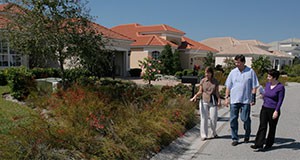
This 4-page fact sheet is the seventh publication in a series focusing on encouraging water conservation among Florida residents who use irrigation in their home landscapes. Extension educators create programs to encourage good irrigation practices and water conservation activities based on personal and social normative beliefs. To help in this goal, the authors examine personal and social norms of Florida residents who use irrigation in the home landscape and describe how Extension educators can capitalize on these positive norms to motivate Floridians to learn and use best water conservation practices. Written by Anil Kumar Chaudhary, Laura A. Warner, Alexa Lamm, Joy N. Rumble, and Randal Cantrell and published by the Agricultural Education and Communication Department.
http://edis.ifas.ufl.edu/wc205

